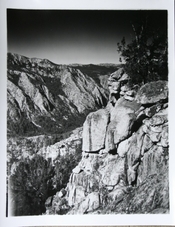aparat
Member
The fallacy with BTZS sliding EI with development comes from it’s assumption that the 0.1 density above base+fog is the point where exposure is to be indexed.
It’s not. It’s just an easy point to find.
The point to index from is the point where the curve reaches a third of its average gradient.
Our friends at Kodak went to a lot of trouble to find out this tidbit of info, but finding this third of average gradient was hard. DIN campaigned with the standards organizations to call the speed point 0.1 above base plus fog. Any darkroom tech could find that.
They compromised in the end and said “fine”. You can have the 0.1 speed point but only when you develop the film to a specific contrast. Any other contrast doesn’t count.
When film is developed to ASA parameters the 0.1 “speed point” is 0.29 away from the one-third average gradient point.
That’s really the point under which you don’t want any shadow of your picture to fall, and the ASA/ISO speeds all make it so (for black and white negative film).
This actual point Kodak says we’re looking for is further down the toe, where the curve is turning so flat you can’t get anything more out of it.
If you develop film less, the whole curve gets flatter. You print on higher contrast paper that can get detail out of the slight detail, you can slide further down from the 0.1 speed point.
If you develop more, then you need to use lower contrast paper (assuming normal contrast subject and the goal to make an excellent print - not talking of pushing when you don’t care about print quality so much). Now your detail falls off closer to the 0.1 speed point.
In other words, effective speed of the film is fairly inflexible, it’s pretty close to the rated film speed under a wide range of development times.
Stephen Benskin wrote about this in threads about Delta-X.
If you accept this idea then you can just call the speed only when it’s met ASA parameters and don’t change the speed for different development times.
Bill, thank you for this thorough explanation. I just want to make a couple of additional points, if you don't mind. Phil Davis recommends deriving EFS values not from the 0.1 criterion, but from what he calls "fractional gradient IDmin values." His definition of "fractional gradient" speed is a little idiosyncratic, but it works within the BTZS system. In fact, almost everything Davis recommends in his book should be, in my opinion, considered within the BTZS system, rather than as universal sensitometric concepts. Otherwise, we get discrepancies, inaccuracies, and potential confusion. For example, the fractional-gradient-based EFS is best understood as potentially leading to higher quality negatives, i.e., negatives that are less prone to underexposure errors, rather than being "theoretically correct," if applied withing the BTZS exposure-development system. That is Phil Davis's message.
Regarding the idea of Effective Film Speed, in general, it is fairly well-documented in the literature, as these relative lateral speed-point displacements have been observed within curve families. It's what one does with that information that matters, as you point out.







